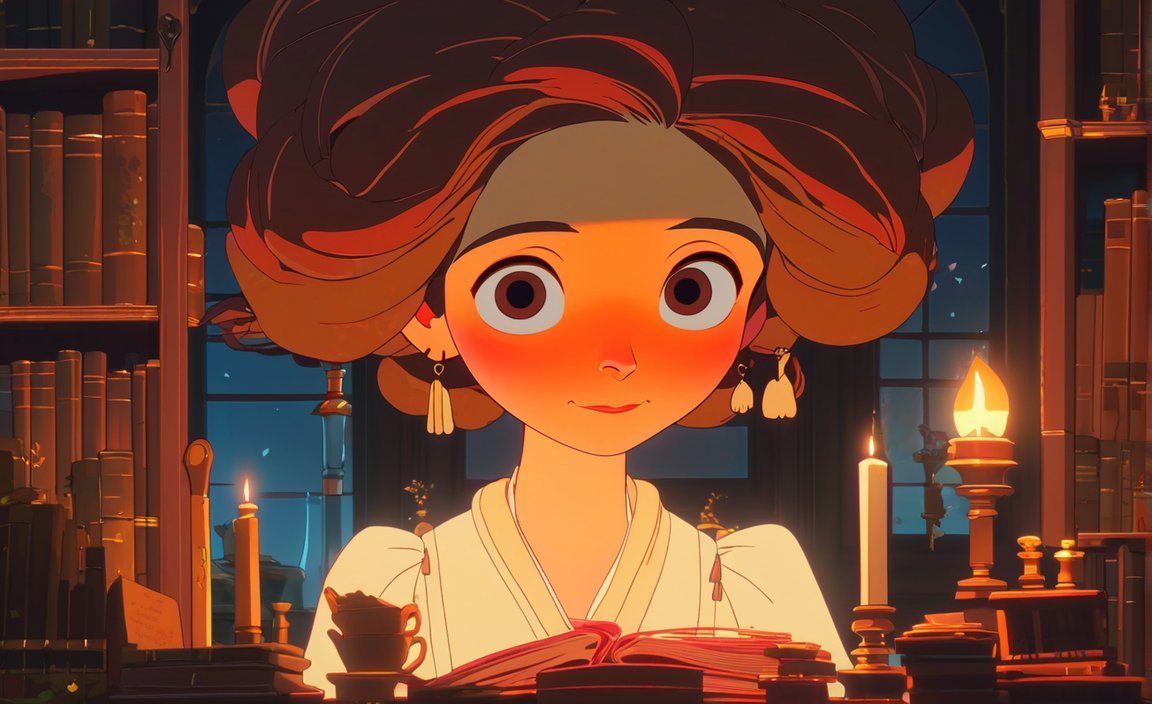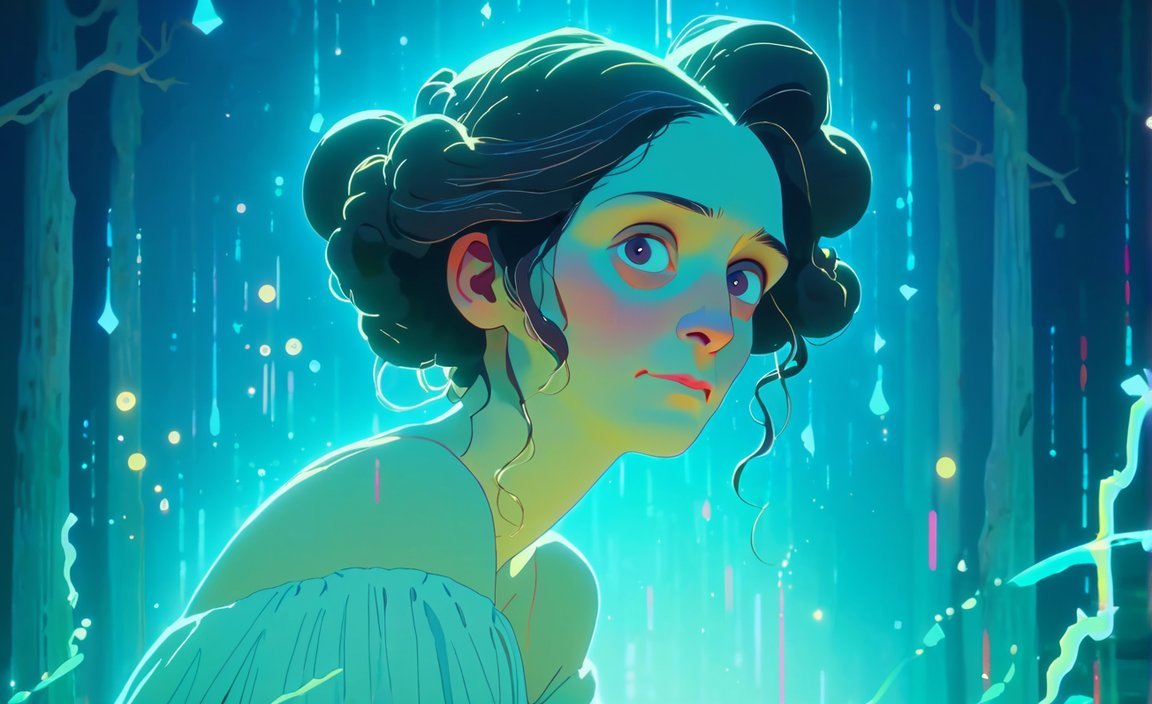Welcome to an exciting journey into the world of Mary Shelley, where we will uncover fascinating fun facts about her life and work. In this article, titled “Discover Fascinating Mary Shelley Fun Facts: Unveiling Literary Legacy,” we will delve into the lesser-known facets of this renowned historical and literary figure. Prepare to be amazed as we peel back the layers and celebrate Mary Shelley’s enduring legacy that continues to captivate readers around the world. So, let’s embark on this literary adventure and explore the intriguing details that make Mary Shelley’s story truly remarkable.

Key Takeaways:
- Mary Shelley’s novel, Frankenstein, is widely considered the first science fiction novel and has had a significant impact on the genre.
- She also wrote the first work of modern post-apocalyptic fiction, exploring themes of the apocalypse and its aftermath.
- Despite never attending school or receiving formal education, Shelley showcased her creativity and talent in an unconventional environment.
- Shelley’s mother, Mary Wollstonecraft, was a prominent feminist writer and activist, influencing her own perspective and writing style.
- At the age of 21, Shelley published Frankenstein, but she wrote the iconic piece at the young age of 18.
- Mary Shelley’s life and contributions to literature continue to inspire and captivate readers, cementing her status as a literary icon.
Mary Shelley Fun Facts
Mary Shelley, the brilliant mind behind the iconic novel Frankenstein, has left an indelible mark on literature. Here are some fascinating Mary Shelley fun facts that shed light on her extraordinary life and literary legacy:
1. Pioneer of Science Fiction
Did you know that Mary Shelley’s Frankenstein is widely considered the first science fiction novel? This groundbreaking work has not only become a literary classic but has also paved the way for the entire genre of science fiction. Shelley’s imaginative exploration of the ethical and moral implications of scientific advancement continues to captivate readers to this day.
2. Trailblazer of Post-Apocalyptic Fiction
Beyond Frankenstein, Mary Shelley also holds the honor of writing the first work of modern post-apocalyptic fiction. In her lesser-known novel, “The Last Man,” Shelley delves into the aftermath of a devastating global pandemic, a theme that feels eerily relevant in today’s world. Her insightful exploration of the human condition amidst chaos and despair showcases her exceptional storytelling abilities.
3. Unconventional Education
Despite her literary achievements, Mary Shelley never attended school or received any formal education. Growing up in an unconventional environment, her creativity and talent were nurtured through exposure to her parents’ intellectual circles and their extensive library. The absence of formal education only serves to highlight the depth of Shelley’s innate genius and her ability to transcend traditional learning boundaries.
4. Powerful Feminist Influence
Mary Shelley’s connection to women’s empowerment ran deep. Her mother, Mary Wollstonecraft, was a prominent feminist writer and activist. Wollstonecraft’s fierce advocacy for women’s rights undoubtedly left a lasting impression on Shelley, influencing her own viewpoint and writing style. Shelley’s portrayal of complex female characters and her exploration of gender roles in her writing exemplify her commitment to promoting women’s empowerment and equality.
5. Youthful Literary Genius
It’s astonishing to think that Mary Shelley published Frankenstein at the tender age of 21. However, what is even more remarkable is that she penned this iconic piece of literature at the young age of 18. With her boundless imagination and unparalleled storytelling prowess, Shelley created a literary masterpiece that continues to resonate with readers across generations.
Mary Shelley’s life and contributions continue to inspire and captivate readers worldwide. Through her innovative storytelling and profound exploration of themes, she has cemented her status as a literary icon. So, the next time you pick up a copy of Frankenstein, remember the incredible woman behind the pages, defying conventions and shaping the course of literary history.
References:
– interestingliterature.com
– profilebooks.com
– factsking.com
– bookriot.com
Jack London was not just an ordinary writer, but a man with interesting experiences. Want to know more about Jack London’s interesting facts? Click here: Jack London Interesting Facts
Shelley’s Marriage to Percy Bysshe Shelley: A Scandalous Love Story
Mary Shelley, the renowned author of Frankenstein, had a life filled with intriguing tales and fascinating experiences. One such captivating story is her scandalous marriage to Percy Bysshe Shelley, a renowned poet of the Romantic era. Let’s dive deep into this unconventional love story that captivated the literary world.
Key Takeaways:
– Mary Shelley’s marriage to Percy Bysshe Shelley was considered scandalous at the time due to the circumstances surrounding their union.
– Percy Bysshe Shelley was already married to another woman, Harriet Westbrook, at the time he met Mary.
– Mary and Percy’s relationship caused a major scandal in society, as marital fidelity was highly valued during the early 19th century.
– After Harriet tragically drowned herself, Percy and Mary were able to marry and publicly legitimize their union.
At the heart of this scandalous love story was Percy Bysshe Shelley, an English Romantic poet and philosopher. His passionate search for personal love and social justice made him an influential figure in the literary world. Born into a wealthy background on August 4, 1792, in West Sussex, England, Shelley possessed a keen intellect and a rebellious spirit.
In a society bound by strict marital conventions, Percy’s marriage to Harriet Westbrook already defied societal norms. However, when he met Mary Shelley, their connection was undeniable. Mary, gifted with literary talent and intellect, was the daughter of Mary Wollstonecraft, a prominent feminist writer and activist. This union between two intellectual powerhouses was destined to cause a commotion.
Unbeknownst to Mary and Percy, their love affair would lead to a tumultuous journey. While Mary and Percy traveled throughout Italy, their relationship faced numerous challenges. Not only did they have to bear the judgment of society for their scandalous union, but they also suffered tragedies and personal losses. Despite the obstacles, their love endured.
The most scandalous aspect of their marriage was the fact that Percy Bysshe Shelley was still legally married to Harriet at the time. This situation angered many and resulted in the couple’s social ostracization. However, fate seemed to intervene when Harriet tragically took her own life. Shortly after this tragic event, Percy and Mary were finally able to marry and obtain the legitimacy they had long desired.
Throughout their marriage, Percy Bysshe Shelley and Mary Shelley collaborated on various literary projects, supporting and inspiring each other’s work. The couple’s love, intellect, and artistic endeavors created a dynamic partnership that both nurtured their individual talents and shaped the literary landscape of their time.
Unfortunately, their love story was cut short when Percy Bysshe Shelley died at the young age of 29. Despite his untimely death, his impact on literature and philosophy remains undeniably influential, and his poems continue to be regarded as some of the greatest in the English language.
Today, we remember Mary Shelley not only as the author of the iconic novel Frankenstein but also as a woman who defied societal expectations and embraced an unconventional love. The scandalous nature of her marriage to Percy Bysshe Shelley adds an intriguing layer to her legacy, immortalizing their love story in the annals of literary history.
In conclusion, Mary Shelley’s marriage to Percy Bysshe Shelley, a renowned poet, was scandalous at the time due to the circumstances surrounding their union. Their love story, marked by societal judgment and personal tragedy, continues to captivate readers and serves as a testament to the enduring power of love and art.
Sources:
– Percy Bysshe Shelley | English Romantic Poet & Philosopher
– Percy Bysshe Shelley – Wikipedia
Mary Shelley Fun Facts: Unveiling Literary Legacy
Mary Shelley, the renowned author behind the iconic novel Frankenstein, led a remarkable life filled with triumphs and tragedies. Beyond her literary accomplishments, Mary’s personal journey was marred by profound loss and heartbreak. In this article, we will explore the lesser-known facets of Mary Shelley’s life, shining a light on her enduring legacy. Join me as we uncover fascinating details about the woman behind one of the most celebrated works in literary history.
Key Takeaways:
- Mary Shelley, born to famous intellectuals Mary Wollstonecraft and William Godwin, inherited a rich intellectual heritage that would shape her artistic genius [^1^].
- At a young age, Mary eloped with the poet Percy Bysshe Shelley, causing societal scandal and disapproval from her father [^1^].
- Tragically, Mary Shelley lost several children due to illness and personal tragedy, which plunged her into deep depression [^2^].
- Despite these heart-wrenching losses, Mary’s only surviving child, Percy Florence, brought a glimmer of hope and joy to her life [^2^].
- Mary and Percy’s tumultuous love story was marked by societal judgment, but their union ultimately became legitimate following Percy’s first wife’s tragic death [^1^].
- Mary Shelley’s life was also plagued by her own health struggles, likely caused by a brain tumor, which led to her untimely death at the age of 53 [^4^].
- Mary Shelley’s contribution to literature, particularly her magnum opus Frankenstein, cemented her status as one of the most influential writers of her time [^5^].
Now, let’s delve deeper into these incredible facts about Mary Shelley.
Fact #1: The Gifted Heritage
Mary Shelley’s parents, Mary Wollstonecraft and William Godwin, were both influential figures in the intellectual circles of their time [^1^]. Her upbringing immersed her in a world of radical ideas and philosophical debates, undoubtedly influencing her own literary prowess.
Fact #2: Forbidden Love
In an act of rebellion, Mary eloped with Percy Bysshe Shelley when she was just a young woman [^1^]. Their relationship was scandalous, not only because Percy was already married, but also due to societal expectations surrounding marital fidelity at the time. Mary’s father vehemently disapproved of their union, further adding to the drama surrounding their love story.
Fact #3: A Mother’s Unimaginable Grief
Tragedy struck Mary Shelley’s life as she experienced the devastating loss of several children [^2^]. Coping with the heartbreak of losing her beloved babies took a toll on Mary’s mental health, plunging her into a deep depression.
Fact #4: The Ray of Light
In the midst of the darkness, Mary Shelley found solace in her only surviving child, Percy Florence [^2^]. His presence offered a glimmer of hope and joy in her life, serving as a source of strength during her darkest times.
Fact #5: A Love Conquering All
Despite the challenges they faced, Mary and Percy’s love endured. Following the tragic death of Percy’s first wife, they were finally able to marry and legitimize their union [^1^]. Their profound affection for each other and their shared artistic endeavors left an indelible mark on the literary landscape.
Fact #6: A Life of Struggles
Mary Shelley battled with her own health issues throughout her later years [^4^]. It is believed that she suffered from a brain tumor, which contributed to her declining health. These physical afflictions ultimately led to her untimely death at the age of 53, leaving behind a legacy that would transcend time.
Fact #7: Literary Immortality
Mary Shelley’s literary contribution, particularly through her masterpiece Frankenstein, solidified her as one of the most influential writers of her era [^5^]. Her groundbreaking work, exploring themes of science, ambition, and the human condition, continues to captivate readers and inspire generations of writers.
Mary Shelley’s life was a tapestry of joy and sorrow, triumphs and defeats. Through her enduring legacy, she reminds us of the power of storytelling and the resilience of the human spirit. Let us celebrate her remarkable journey and immerse ourselves in the world she created.
Sources:
- History Hit: 10 Facts About Mary Shelley: The Woman Behind Frankenstein
- Notable Biographies: Mary Shelley Biography
In addition to ‘Frankenstein,’ Mary Shelley wrote other novels, plays, and short stories.
Mary Shelley, the renowned author of Frankenstein; or, The Modern Prometheus, had a vast collection of literary creations. While her masterpiece Frankenstein may overshadow her other works, it is important to acknowledge her diverse writing portfolio. Let’s explore some intriguing facts about Mary Shelley and her lesser-known literary contributions:
1. Prolific Novelist
In addition to Frankenstein, Mary Shelley penned several other novels that showcase her remarkable storytelling abilities. Some notable examples include Valperga, The Last Man, and Lodore[^1^]. These works highlight her versatility as a writer and offer unique perspectives on varied themes.
2. Unwavering Dedication
Despite facing personal challenges, Mary Shelley’s passion for writing remained unwavering. She continued to produce literary works throughout her life, even amidst difficult times. She was known to contribute genre fiction pieces for London Magazine, ensuring her creative journey persisted[^1^].
3. A Life of Inspiration
Mary Shelley drew inspiration from various sources, enriching her writing with creativity and depth. She found inspiration from gothic literature, politics, and her own personal experiences[^2^]. These eclectic influences shaped her narratives and contributed to her distinctive writing style.
4. Personal Turmoil and Legacy
Mary Shelley’s life was marked by personal challenges and hardships. She faced the loss of several children, battled with mental health issues, and experienced societal judgment. Tragically, she passed away due to a brain tumor at the young age of 53[^2^].
Key Takeaways:
- Mary Shelley wrote several novels in addition to Frankenstein, including Valperga, The Last Man, and *Lodore[^1^].
- Despite personal challenges, Mary Shelley remained dedicated to her craft, continuing to write throughout her life[^1^].
- Mary Shelley found inspiration from gothic literature, politics, and personal experiences, infusing her writing with depth and creativity[^2^].
- She experienced personal turmoil, which included the loss of children and battles with mental health issues[^2^].
- Mary Shelley’s legacy extends far beyond Frankenstein, showcasing her versatility and impact on the literary world.
Sources:
– 10 Facts About Mary Shelley: The Woman Behind Frankenstein from historyhit.com
– Frankenstein; or, The Modern Prometheus – Britannica from britannica.com

FAQ
Q1: What is Mary Shelley most famous for?
A1: Mary Shelley is most famous for writing the groundbreaking novel Frankenstein, which is widely considered the first science fiction novel.
Q2: What other works did Mary Shelley write besides Frankenstein?
A2: In addition to Frankenstein, Mary Shelley wrote several other novels, including Valperga, The Last Man, and Lodore. She also wrote short stories, essays, and poems.
Q3: Did Mary Shelley receive any formal education?
A3: No, Mary Shelley never attended school or received any formal education. Her creativity and talent were nurtured in an unconventional environment.
Q4: Who were Mary Shelley’s parents?
A4: Mary Shelley’s parents were writer and feminist philosopher Mary Wollstonecraft and political philosopher William Godwin.
Q5: When did Mary Shelley publish Frankenstein?
A5: Mary Shelley published Frankenstein in 1818 when she was just 21 years old. However, she wrote the novel at the young age of 18.
Q6: What was the impact of Mary Shelley’s mother on her writing?
A6: Mary Shelley’s mother, Mary Wollstonecraft, was a prominent feminist writer and activist. Her connection to female empowerment influenced Mary Shelley’s own viewpoint and writing style.
Q7: Who was Mary Shelley’s husband?
A7: Mary Shelley’s husband was the poet Percy Bysshe Shelley, who was known for his passionate search for personal love and social justice.
Q8: How did Percy Shelley’s death impact Mary Shelley?
A8: Percy Shelley drowned in the Gulf of Spezia in 1822. His death had a profound impact on Mary Shelley, and she spent more years as his widow than as his consort.
Q9: What were some of the themes that Mary Shelley explored in her writing?
A9: Mary Shelley’s writing often explored themes of the apocalypse and its aftermath, love, sorrow, hope, and nature.
Q10: What was the cause of Mary Shelley’s death?
A10: Mary Shelley died at the age of 53 due to a brain tumor, which caused her to suffer from illness during the last decade of her life.
- Unveiling the Enigma: Mansoureh Khojasteh Bagherzadeh’s Public Appearances & Private Life in Iran - July 18, 2025
- Unveiling the Mystery: Mansoureh Khojasteh Bagherzadeh’s Husband: A Rare Glimpse into a Private Life - July 18, 2025
- Unveiling Masoud Khamenei’s Mother: Power, Influence, and Iran’s Future - July 18, 2025
















